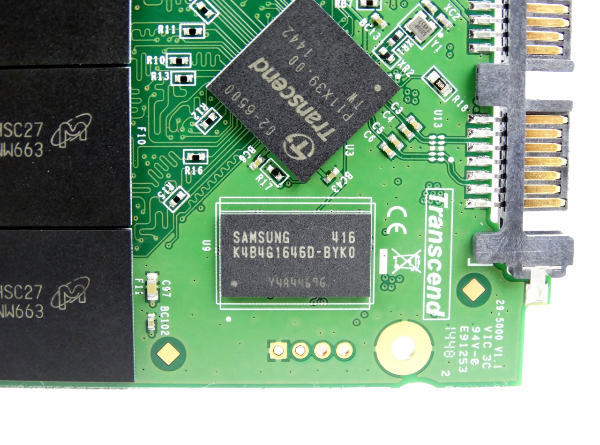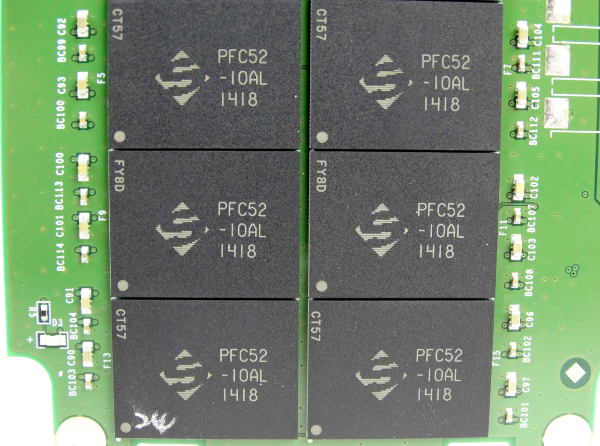Transcend SSD370 Review
Transcend's premium SSD offering consists of a custom Silicon Motion controller that enables encryption and DEVSLP, but questionable flash makes it a poor choice.
Why you can trust Tom's Hardware
A Closer Look
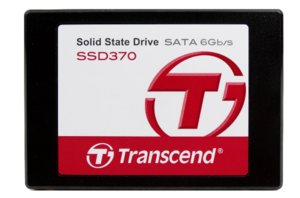
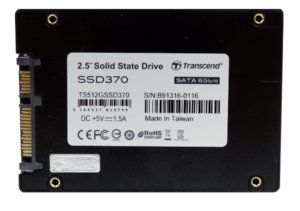
Our sample drives arrived in a plastic anti-static bag and were not part of the full retail kit. This is possibly how the SSD370 is sold to OEMs or other bulk purchasers. We also received the plastic model with what we assume are brass inserts for securing the drive in place with screws. The aluminum drive should offer greater processor and NAND flash heat dispersion, but many other low-power SSDs have performed perfectly fine with a plastic case.

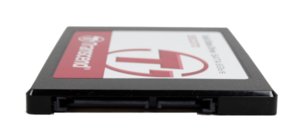
The SSD370 measures 7 mm in height,so it will fit in Ultrabooks and notebooks that require the thinner design. Most new SSDs use the new, thinner design to ensure the highest level of compatibility. The spec isn't used just in Ultrabooks; we've seen the 7-mm limited space on full-size Lenovo notebooks as well.
Both of our samples used a Transcend-branded SSD controller based on Silicon Motion's SM2246EN. Silicon Motion works with partners to customize firmware, adding or subtracting features as well as adjusting settings to increase compatibility. Transcend paired the custom controller with Samsung LPDDR2 DRAM that caches the table map for the flash translation layer.
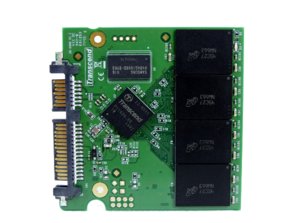
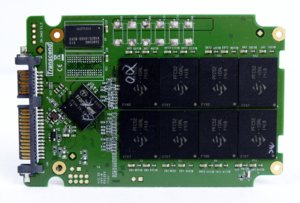
On the left, we see the Transcend SSD370 256GB model with Micron 20-nm flash. The PCB is nearly half the length, and has four NAND flash packages on each side.
The SSD370 512GB uses a full-length PCB, with eight NAND flash packages on each side. This configuration uses all of the available Chip Enable (CE) spaces from the controller to deliver the best performance from the selected components.
In the Transcend SSD370, we have an issue with the selected components. Not every Ford Pinto ended in a fireball, but nonetheless, it could have happened to every family driving one on the road. We'll use that analogy for the Transcend SSD370: Not every family will lose their pictures, tax documents or other important data, but it could happen and is more likely to than with SSD370 parts using genuine Micron flash.
Get Tom's Hardware's best news and in-depth reviews, straight to your inbox.
Current page: A Closer Look
Prev Page Pricing, Warranty and Accessories Next Page Data Type Comparison
Chris Ramseyer was a senior contributing editor for Tom's Hardware. He tested and reviewed consumer storage.
-
synphul Good info to have. More problematic than the confusing product model numbers correlating to plastic vs aluminum bodies I think are the differences in the internals. I'm not sure how this is considered proper practice since changing the controller and the nand flash is basically selling a different quality drive even if the specs are loosely similar. Makes people like myself wonder how they can get away with this and yet nvidia had to answer to a class action lawsuit over the layout of their vram when in fact they did have the full 4gb of vram on the card. It just reeks of bait and switch. Especially when as mentioned reviewers are often given cherry picked units that don't necessarily reflect the common resale market most consumers will be met with.Reply
It would be nice to see manufacturers give review sites a voucher instead, rather than sending a unit directly for testing. Good for 1 purchase of the part slated for review from the retailer of their choice to ensure it's random and more indicative of the lottery a consumer would face. That is so long as they were confident that a random off the shelf unit would fairly represent their products rather than one specially set aside for review.
It may not seem like such a big deal but with the guts swapped out for lower cost and potentially lower quality alternatives that's an issue. I wouldn't be happy purchasing a top tier tool set only to find out it included a number of budget store brand replacements in lieu of what I paid for just because it's 'basically' the same. In just about any other scenario this would create great backlash. Why is it just accepted as common practice in the form of ssd drives? Not that I'm sue happy or think lawsuits are the solution in an attempt for gains but some sort of reassurance that the customer is getting what they're told they're buying rather than sold on a song and given something entirely different. -
crabdog +1 for this review. It's nice to see someone report the truth and their real concerns without sugar coating.Reply -
Bannereus good to see that not every product is top of the line, gives meaning to those that earn top recommendationsReply
but please fix Section 5. "Test PERIMETERS ..." -
Wisecracker ""Paralysis by Over-Analysis""Reply
(leads to ridiculous conclusions)
The real-world tests show there is generally one percent or less difference between the drives tested, so the bottom line is ...
buy whatever SSD (with a 3-yr warranty) that is on sale.
-
fudgecakes99 i bought one for 160 from amazon 512gb's, on sale. Have yet to boot it as skylate 6700k has yet to be released in america, from the charts i dont' see a major difference save about 70-90 mb's write difference, as someone moving up from a 5200rpm hdd i expect great things.Reply -
CRamseyer Kingston's V300 went from the top ten selling SSDs on Amazon to off of the list when the info was picked up by review site news teams.Reply -
shrapnel_indie Disappointing to see price-point win over quality... yet again.Reply
Manufacturers have been sending cherry-picked "review" units of products for decades, nothing new there... sadly it's to get the best reviews possible while hoping consumers won't be able to tell the difference in the actual product.
The "product specification may change" disclaimer has been around for a while. Sometimes it is used due to certain components going away, becoming too expensive (for the price point the bean counters and marketing decide on), or (less seen as it means they care about the product and reputation) quality goes south. Sadly it is more often abused just to make sure tier-1/top tier executives get their (large as they can get away with) bonus checks. -
kalmquist The Crucial BX100 line uses the same controller as the Transcend SSD370. I've heard no reports of Crucial using cut-rate NAND, and I wouldn't be expect them to since Cruical (aka Micron) makes its own NAND. Recently, prices have been lower for the BX100 than the SSD370. It seems like the BX100 would be a better option for anyone who might consider an SSD370.Reply
-
Dark Falz I got a 256 and 512 about a year ago, main concern was price. I wanted the MX100 instead but couldn't find any in stock at the time. Have served me fine but definitely weren't worth the money. Has received no Firwmare updates/improvements (which I suppose is not always necessarily a bad thing, look at the 840). The plastic housing doesn't bother me except for the fact there's no temperature sensor in the SMART data, so I can't tell how warm it gets. Will probably upgrade to a 1 or 2 TB when they become more affordable and put this on my laptop instead. It performs much like any other SSD but disappointing to see it fare so badly in the theoreticals (when I bought it, there were not many reviews).Reply
